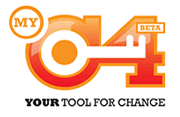 Based on her experience in founding SEM Fund, Kiva’s oldest filed partner in Senegal, Julia Kurnia believes there is a vast untapped potential for p2p lending in microfinance.
Based on her experience in founding SEM Fund, Kiva’s oldest filed partner in Senegal, Julia Kurnia believes there is a vast untapped potential for p2p lending in microfinance.
To tap it she launched Zidisha.org, a non-profit that makes two changes in the process. First: There are no intermediaries. Lenders lend directly to computer literate entrepreneurs in Africa (currently Senegal and Kenya). Second: Only entrepreneurs with a credit history that have in the past paid back a loan by a bank or a financial institution successfully are eligible (this is verified).
Julia Kurnia told P2P-Banking.com:
Lending through local intermediary microfinance organizations creates high costs for borrowers (Kiva borrowers pay an average of 35.25% in interest to Kiva field partners, according to the Kiva website statistics). Outsourcing loan management to local intermediaries also puts P2P platforms at risk of pyramid schemes, in which unscrupulous partners use funds disbursed for new loans to mask embezzlement of repayments due to lenders. Kiva and MyC4 did very well when they operated at small scale, but as time passed and they added large numbers of partners, the cost of controlling intermediary fraud ballooned and may make their models unsustainable at a large scale.
Lenders at Zidisha upload money via Paypal (fees apply) and then can browse listings, written by the entrepreneurs themselves. Lenders do get paid interest, whoever “the principal purpose of Zidisha’s lenders in funding loans is to help finance these entrepreneurs, and not to make a profitable investment.” according to the FAQ. During bidding lenders can underbid each other with the result of the entrepreneur profiting from a sinking interest rate.
I am looking forward to use Zidisha. I plan to publish an interview with Julia Kurnia next week. If you have a question you want asked you are invited to email it to me or post it as comment below.

 Acting on problems that came about when an insurance scheme, that was supposed to cover over 200 loans in Ivory Coast, failed (
Acting on problems that came about when an insurance scheme, that was supposed to cover over 200 loans in Ivory Coast, failed (